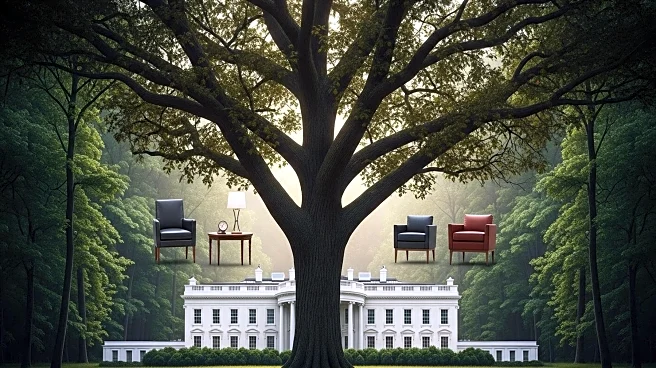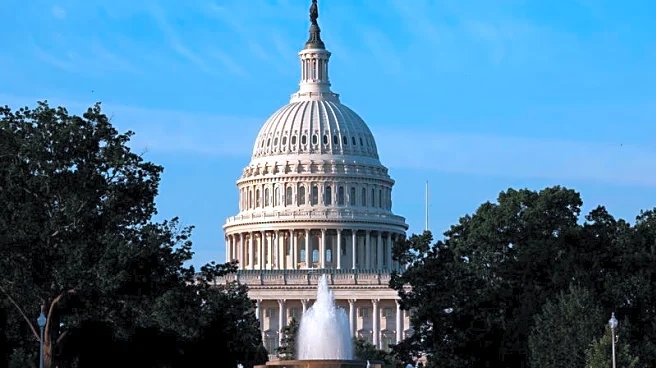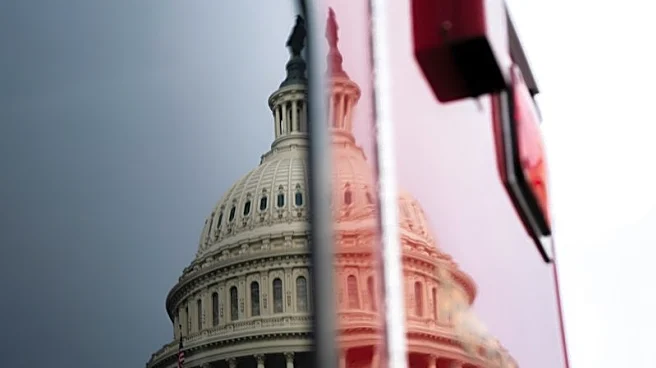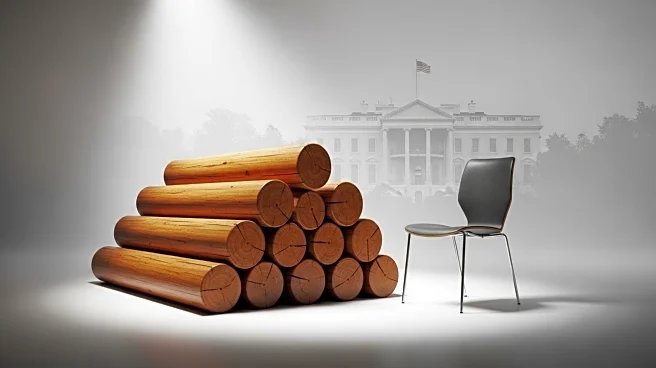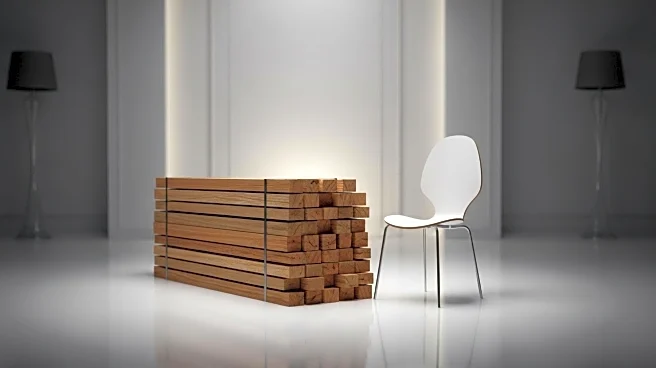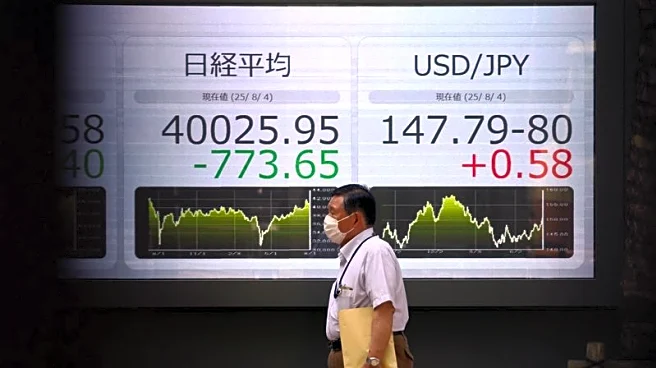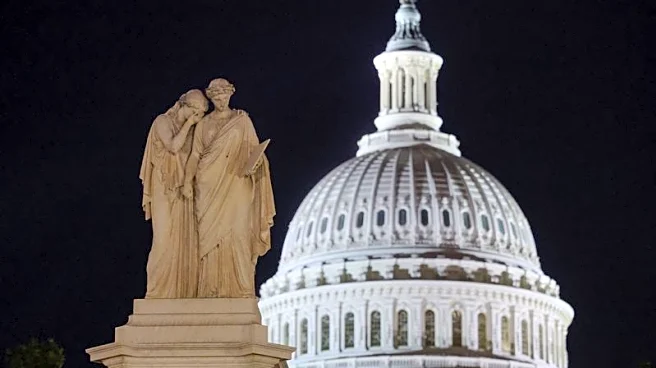What is the story about?
What's Happening?
The White House has announced new tariffs on imports of timber, lumber, and derivative products, set to take effect on October 14. This move follows an executive order from President Trump, citing national security concerns and the need to bolster the American wood industry. The tariffs include a 10% tariff on global imports of softwood lumber and a 25% tariff on certain upholstered furniture, which will increase to 30% on January 1. The decision is based on findings by Secretary of Commerce Howard Lutnick, who determined that current import levels threaten U.S. national security by weakening the domestic wood industry. The tariffs aim to protect U.S. manufacturers from import price competition and encourage onshoring of manufacturing.
Why It's Important?
The imposition of these tariffs is significant for the U.S. wood and furniture industries, potentially leading to increased domestic production and job creation. However, it may also result in higher prices for consumers and businesses reliant on imported wood products. The tariffs could strain trade relations with key partners, although the U.K., EU, and Japan will receive more favorable treatment due to existing trade agreements. The move reflects broader protectionist trade policies and could influence global supply chains, prompting importers to adjust pricing strategies and sourcing decisions.
What's Next?
As the tariffs take effect, affected industries and trading partners may seek negotiations to mitigate impacts. U.S. manufacturers might benefit from reduced competition, but the potential for increased costs and supply chain disruptions remains. The situation will require close monitoring of trade negotiations and industry responses, as well as potential legal challenges to the tariffs.
AI Generated Content
Do you find this article useful?
